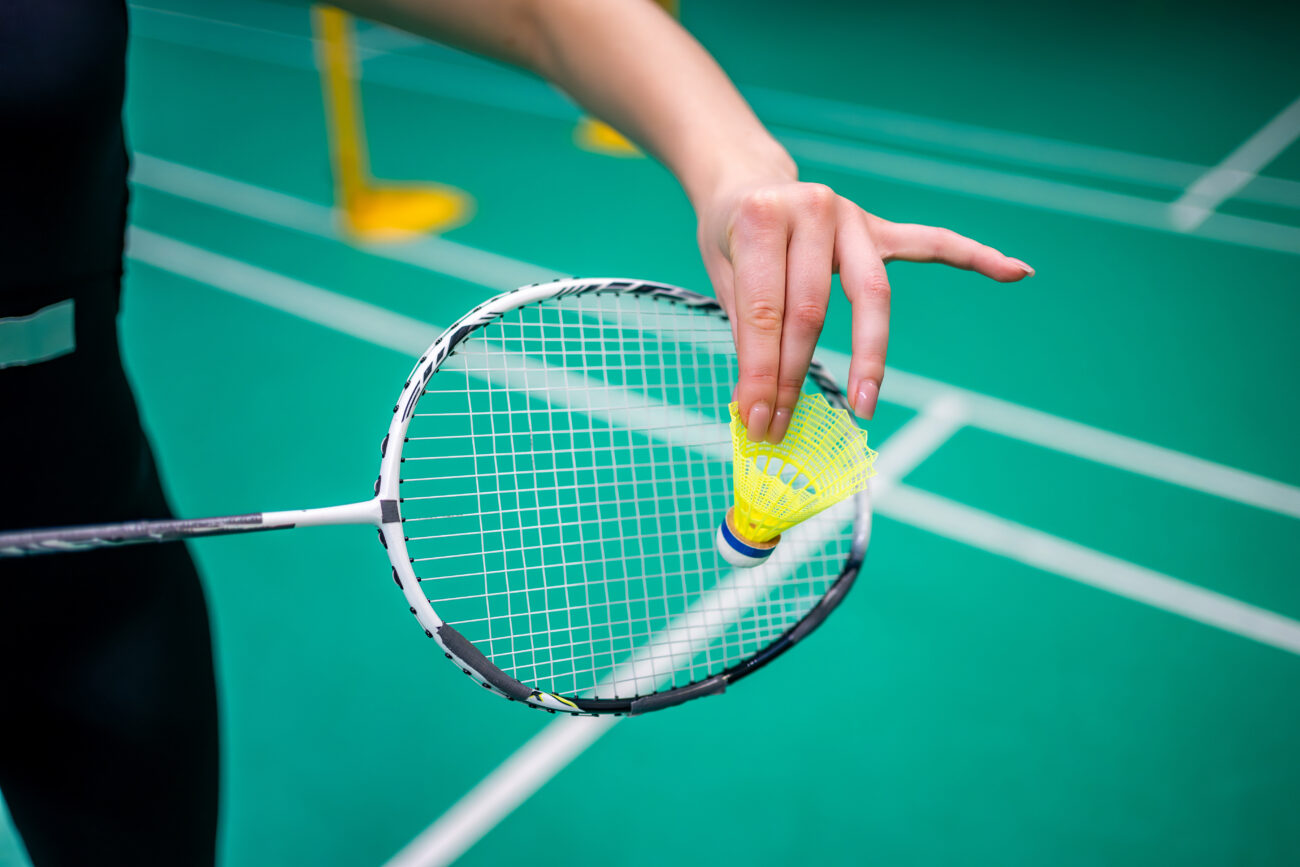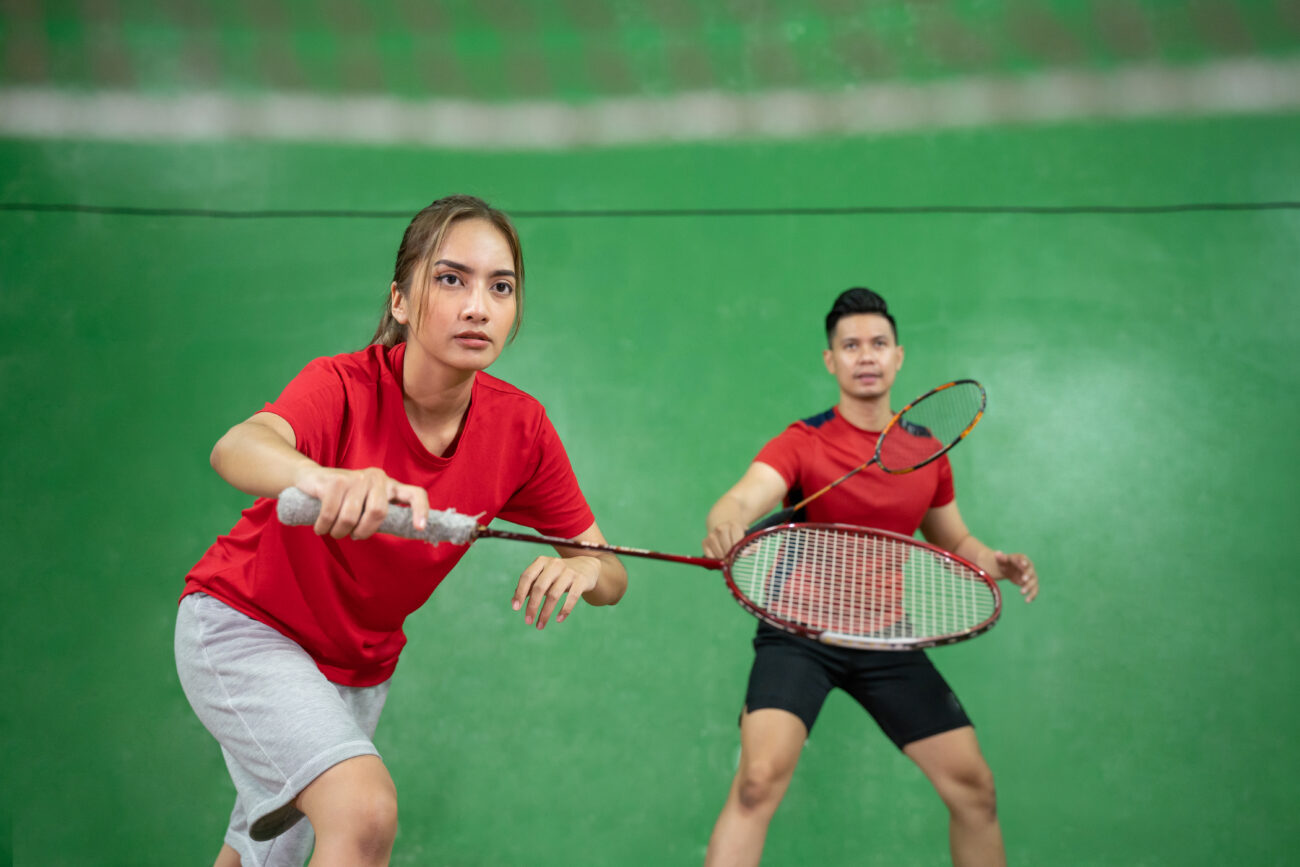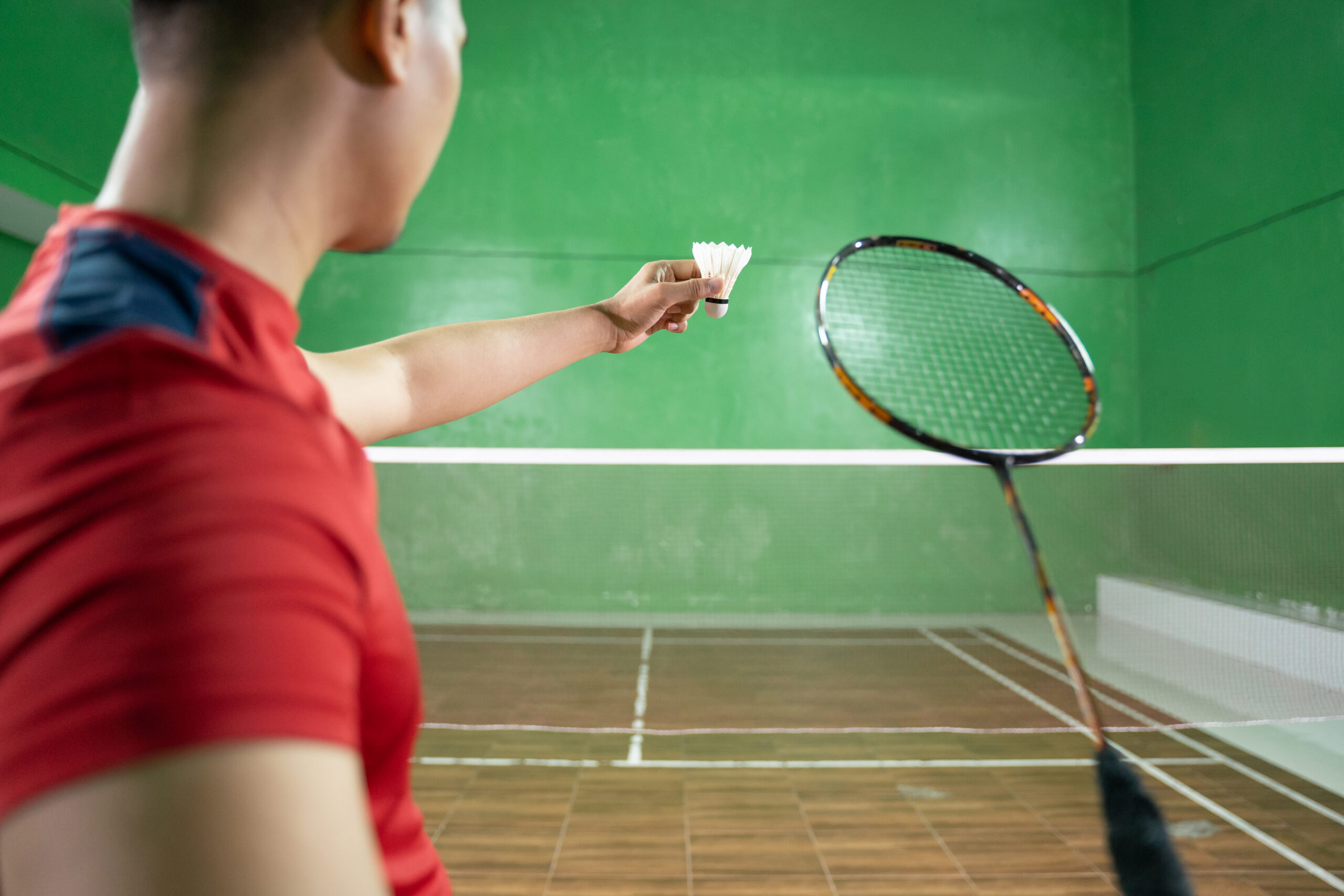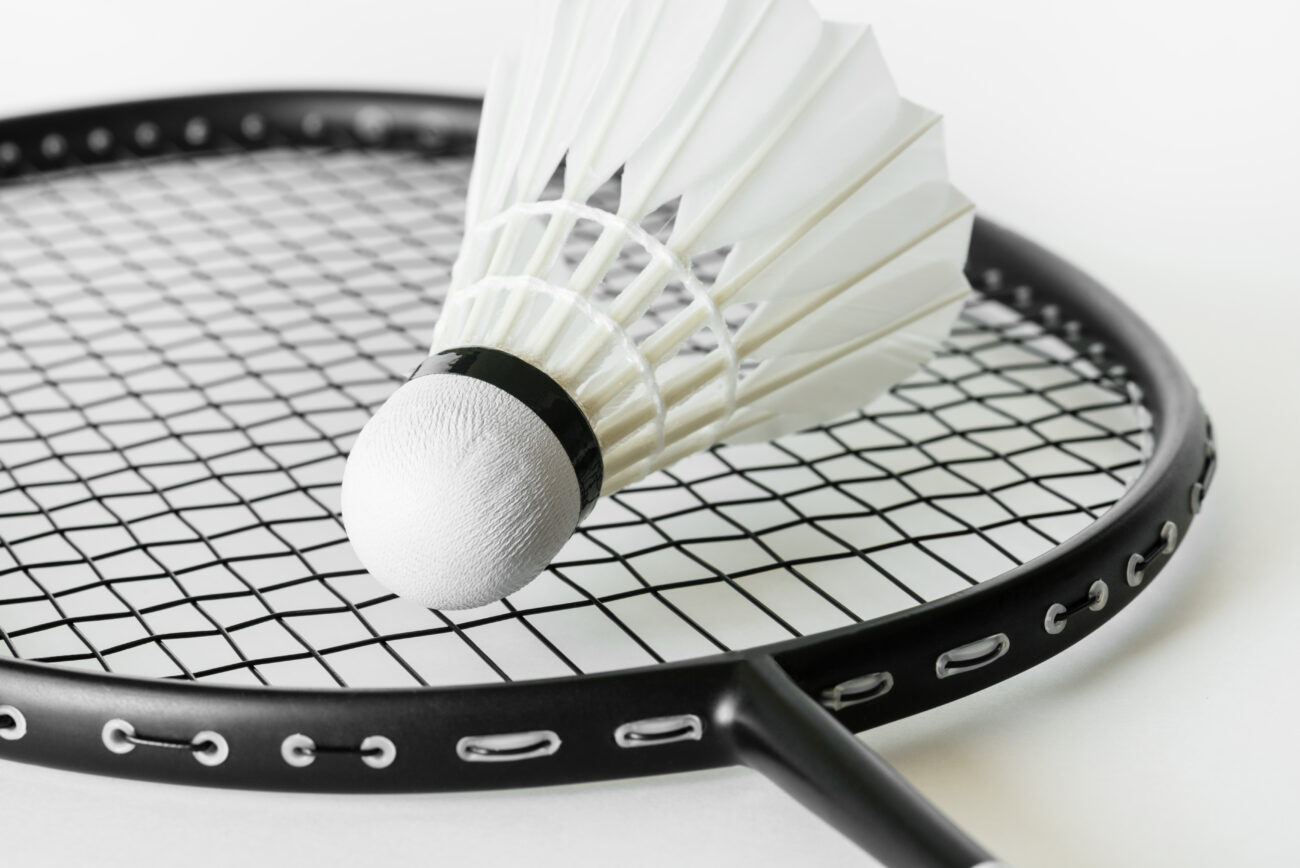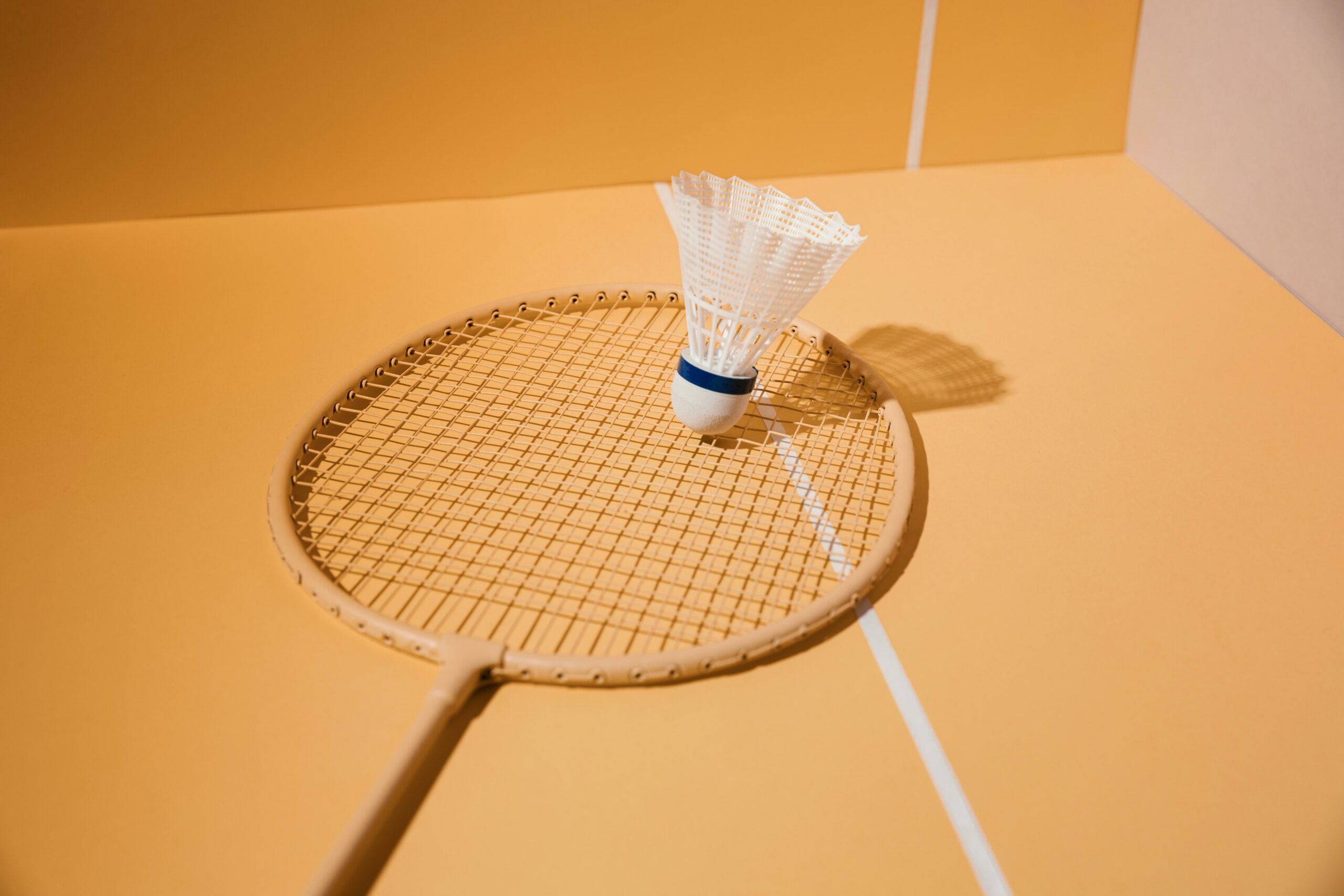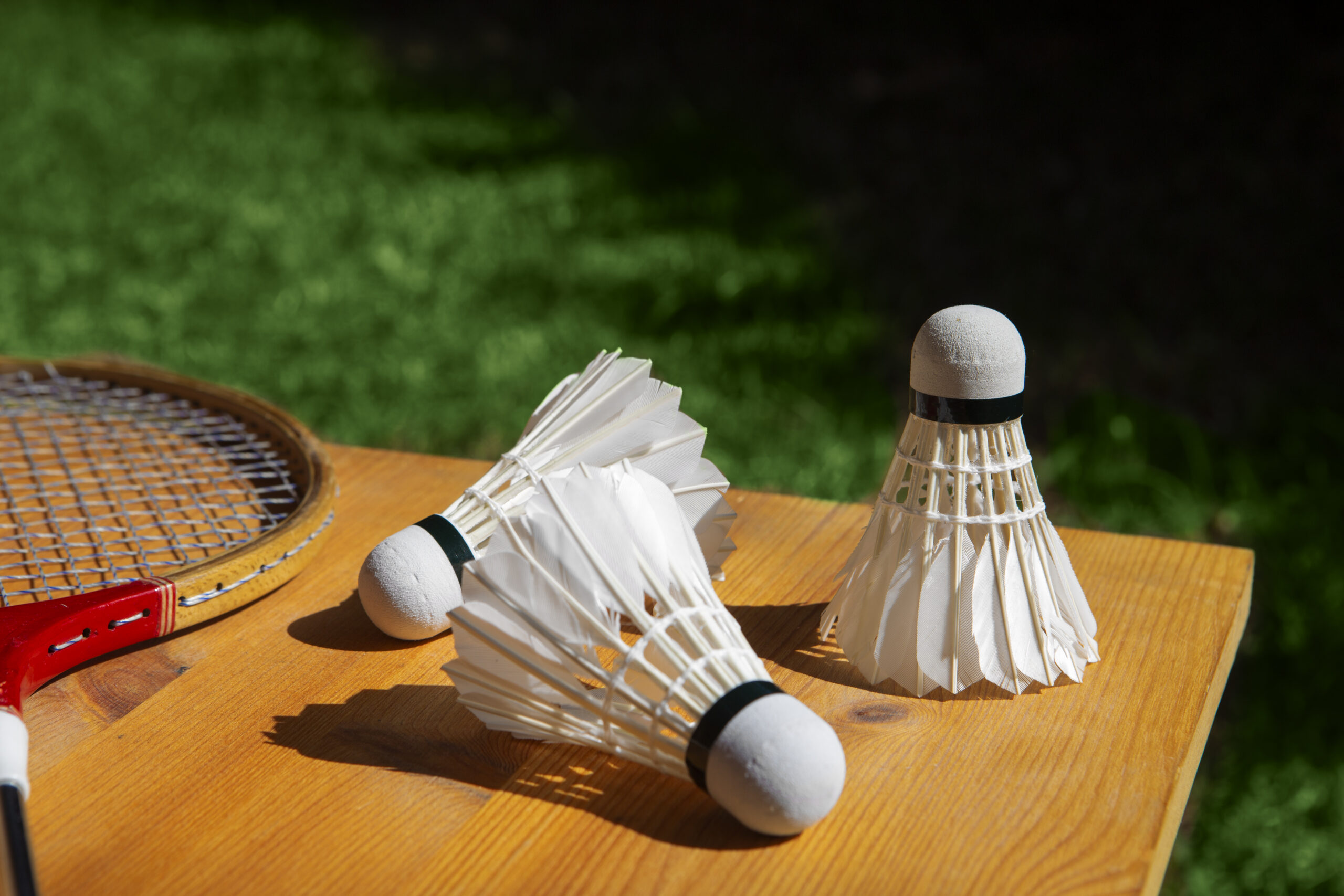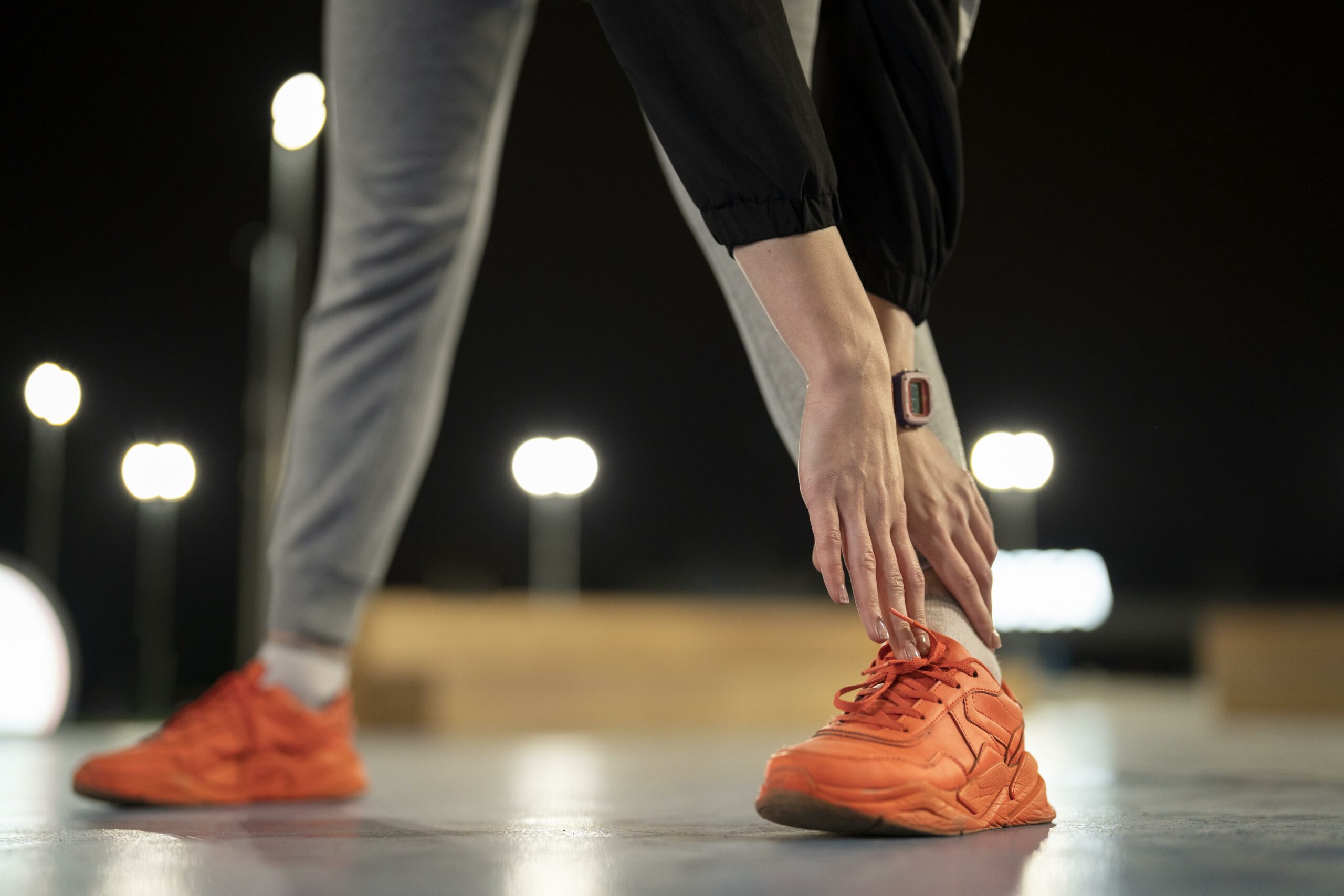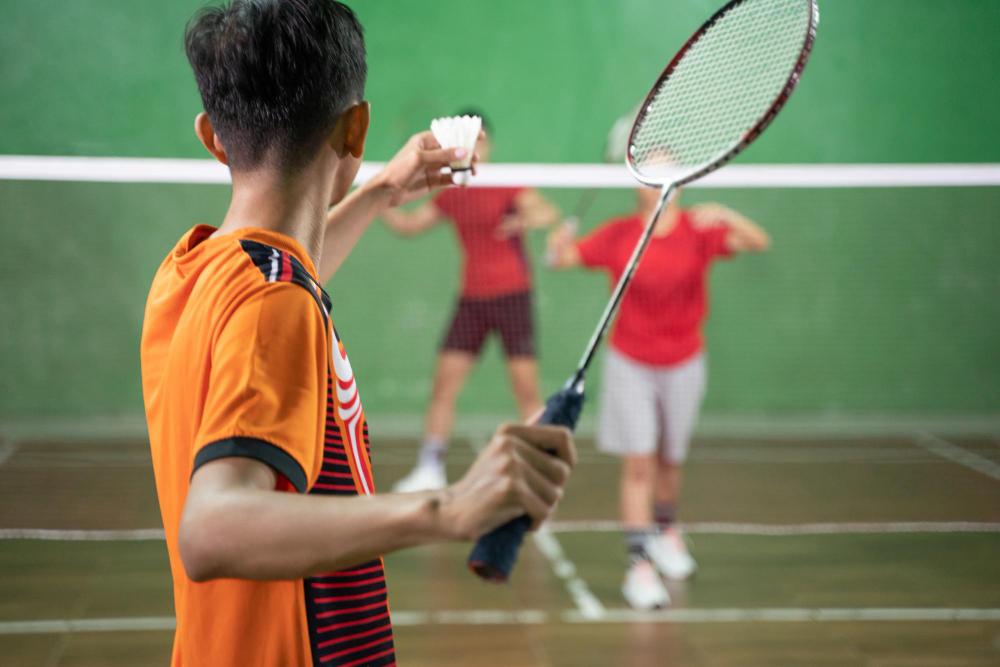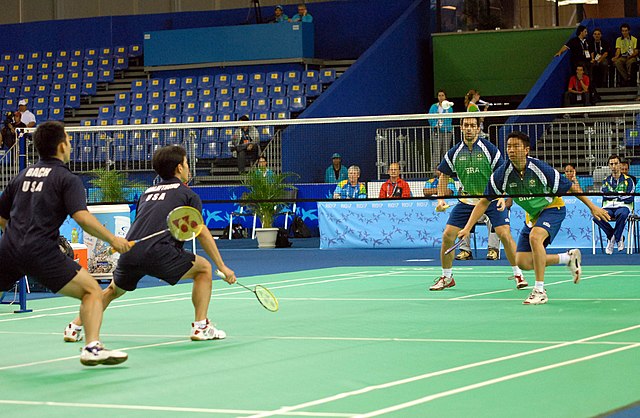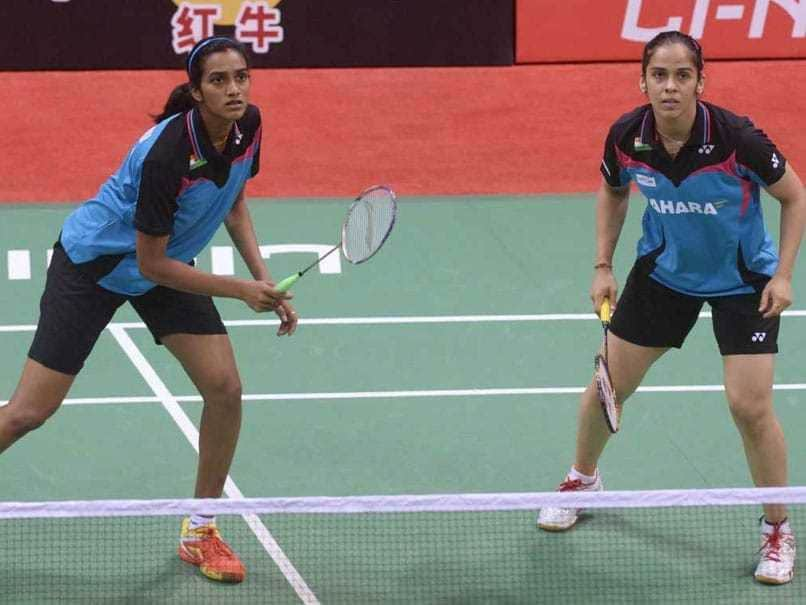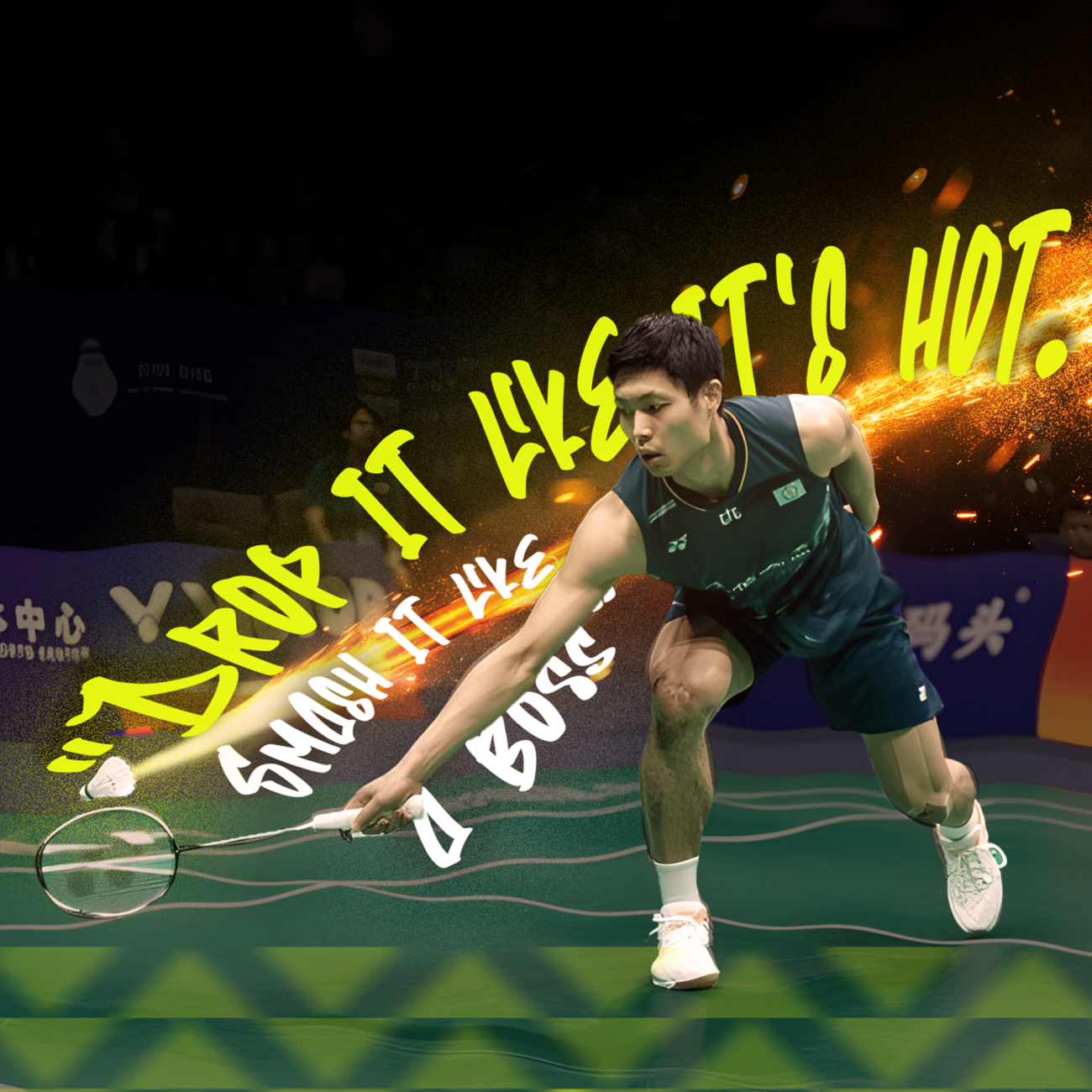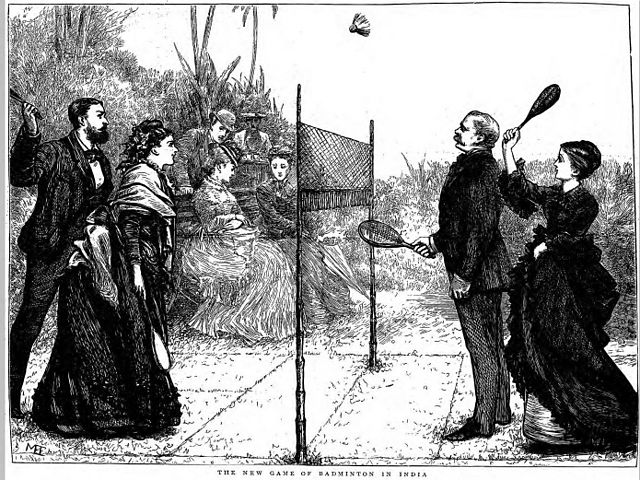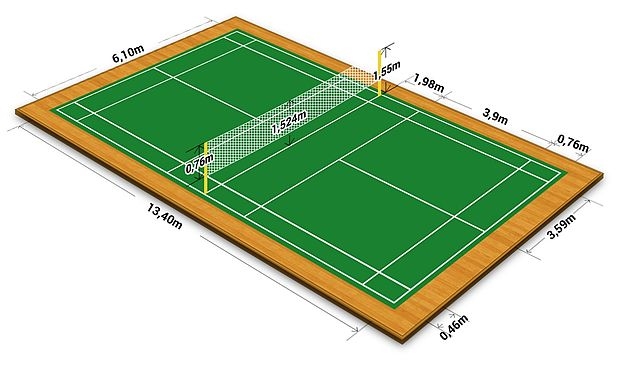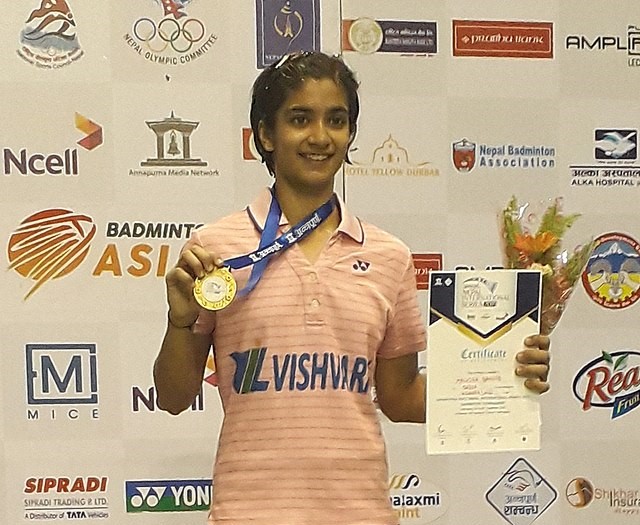Badminton is a fast-paced and dynamic sport that demands precision, agility, and strategy. One of the most fundamental aspects of excelling in this game lies in mastering the various grips that control the racket. The way you hold the racket directly influences your ability to execute different shots, from delicate drop shots to powerful smashes.
In this article, we’ll explore into the four essential badminton grips: the forehand grip, backhand grip, overhead grip, and serve grip. Understanding these techniques is key to developing the skills needed to succeed on the court. Whether you’re a beginner aiming to refine your technique or an experienced player seeking to take your game to the next level, this guide will help you unlock your full potential in badminton. Let’s explore these critical grips in greater detail and learn how each one can elevate your performance.
The 4 basic grip types every Badminton player should master
1. The Forehand Grip
The forehand grip is one of the most fundamental grips in badminton, essential for executing a variety of powerful and precise strokes. Whether you’re smashing from the backcourt, driving the shuttle down the lines, or clearing it high to the opponent’s baseline, mastering the forehand grip is crucial for gaining control over your shots and optimizing your overall gameplay.
The correct hand positioning for the forehand grip forms the foundation for power, control, and accuracy in badminton strokes. To achieve this grip, follow these steps:
– Hold the racket as if you’re shaking hands with it– The racket handle should rest comfortably in your hand. Imagine you are shaking hands with the racket, with the “V” shape between your thumb and index finger aligned with the narrow side of the racket.
– Position your thumb on the wider, flat side of the handle– Your thumb should rest naturally on the flat bevel of the racket handle without pressing too hard, providing balance and subtle control over the racket.
– Curl your index finger around the handle– This finger is crucial for stabilizing the racket and adding control to your shots. The index finger should rest comfortably along the slanted side of the racket handle, forming a relaxed but firm grip.
– Keep your other fingers relaxed– The remaining three fingers should lightly wrap around the racket handle. Avoid gripping too tightly, as a relaxed grip allows for quick and fluid movement, maximizing your ability to react quickly during gameplay.
The technique behind the forehand grip is a combination of proper wrist and forearm movements. When using this grip, the goal is to generate both power and precision in your strokes while maintaining control over the shuttle’s direction and speed. Here’s how to improve your technique:
– Utilize wrist flexibility: The forehand grip enables players to generate a whipping action using the wrist. This snap from the wrist allows you to create a burst of speed and power, especially during fast-paced shots like smashes and drives.
– Engage your forearm: In addition to the wrist, the forearm plays a key role in adding power to your shots. By rotating your forearm (pronation and supination), you can adjust the angle of the racket head and apply different levels of force to the shuttle.
– Maintain fluid motion: When using the forehand grip, fluidity of motion is essential. As you swing, ensure that your grip remains relaxed until just before contact with the shuttle, when you tighten your grip slightly to transfer energy efficiently to the shuttle.
– Transitioning between shots: One of the biggest advantages of the forehand grip is its adaptability. With slight adjustments, you can quickly switch between attacking and defensive shots without changing your grip entirely. For example, you can easily move from a fast smash to a softer net shot by simply adjusting the angle of your wrist.
The versatility of the forehand grip makes it applicable to a wide range of shots in badminton. Its adaptability makes it a go-to grip for players looking to execute various strokes with precision and speed. Below are some of the key shots where the forehand grip is often used:
– Drives: These fast, flat shots are designed to push the shuttle across the net at high speeds. The forehand grip allows you to make quick, powerful drives that keep your opponent on the defensive.
– Smashes: The smash is one of the most aggressive shots in badminton, and the forehand grip is essential for delivering it with maximum power. By utilizing wrist and forearm movement, players can smash the shuttle forcefully downward, often ending rallies with this high-speed shot.
– Clears: Whether it’s an attacking or defensive clear, the forehand grip helps you send the shuttle high and deep into your opponent’s court. This gives you time to reposition yourself while putting pressure on your opponent to respond from the backcourt.
– Net shots: The forehand grip also lends itself to more delicate strokes, such as net shots, where you need to apply finesse rather than power. By adjusting the angle of your wrist and the strength of your grip, you can perform gentle net shots that fall just over the net, catching your opponent off guard.
– Lifts and pushes: When defending against net shots or drops, the forehand grip allows for quick lifts or pushes that send the shuttle back to your opponent’s court in a controlled manner.
2. The Backhand Grip
The backhand grip is a vital component in badminton for returning shots to your non-dominant side and executing precise and powerful backhand strokes. Mastering this grip can significantly improve your ability to respond to opponents’ shots aimed at your weak side, allowing you to stay competitive and maintain control in the rally. By understanding the correct hand positioning, technique, and applications, you can enhance your performance in delivering smashes, clears, and drops with your backhand.
The proper hand positioning in the backhand grip is essential for generating power and accuracy. This grip allows players to handle shots to their non-dominant side with ease, especially when they don’t have the time to rotate their body to play a forehand stroke. Here’s how to position your hand for the backhand grip:
– Thumb placement on the rear of the handle: Unlike the forehand grip where the thumb rests along the side of the handle, in the backhand grip, the thumb plays a more prominent role. It should rest flat against the wide, bevelled back of the racket handle. This position provides leverage and allows for greater force when hitting backhand shots.
– Slight hand adjustment: Your grip should shift slightly from the forehand position. Rotate your hand so that the “V” shape between your thumb and index finger moves slightly to the left (for right-handed players). This adjustment allows you to bring the racket into the correct position for backhand shots.
– Fingers wrapped around for support: Your other fingers should loosely wrap around the handle, with a firm but relaxed grip. While the thumb is the key for applying pressure and control, the fingers provide additional stability and help control the racket during wrist movement.
– Relaxed grip: Keep your grip loose and flexible until just before contact with the shuttle. This relaxed hold allows for quicker reactions and smoother transitions between different strokes.
The backhand grip is most effective when combined with proper wrist and forearm movements. To generate power and precision, players must use a combination of wrist flexion and forearm rotation, which allows them to hit with force even from awkward angles. Here’s how to execute the backhand grip technique:
– Wrist control and power generation: In badminton, wrist movement plays a critical role in generating speed and accuracy. With the backhand grip, the thumb acts as a pivot point, allowing the wrist to snap and produce force. This snapping motion adds speed and power to your shots without requiring large, sweeping motions.
– Forearm rotation: Much like in the forehand grip, the backhand grip relies heavily on forearm rotation to direct the shuttle. Pronation (rotating your forearm outward) and supination (rotating it inward) enable you to control the racket head’s angle, allowing for more versatility in shot placement. Forearm rotation also allows for quicker, more compact swings that are especially useful in defensive situations.
– Compact swing for faster responses: One advantage of the backhand grip is the ability to execute fast, compact strokes. This is particularly useful when the shuttle is moving quickly or when you’re caught out of position. The compact nature of backhand strokes allows for quick counters and reduces the time it takes to reset for the next shot.
– Maintaining control while under pressure: One of the hallmarks of an effective backhand grip is the level of control it offers. Whether you’re returning a fast smash or placing a drop shot, the thumb’s placement on the back of the handle allows you to maintain a firm grip and guide the shuttle with precision, even in high-pressure rallies.
The backhand grip has a wide range of applications in badminton, making it indispensable for any player aiming to develop a complete skill set. It is particularly useful for returning shots to your non-dominant side, and when applied correctly, it can add versatility to your game. Here are the key applications of the backhand grip:
– Backhand smashes: Although less common than forehand smashes, backhand smashes can be a powerful tool in certain situations. The backhand grip allows you to generate sufficient power and angle by utilizing wrist and forearm rotation. This can be particularly useful if your opponent forces you into a defensive position, where turning for a forehand smash isn’t possible.
– Backhand drops: The backhand grip is also essential for executing delicate drop shots from the backcourt to the front of your opponent’s court. The thumb’s position gives you the control necessary to precisely guide the shuttle over the net, creating opportunities to outmanoeuvre your opponent. With the backhand grip, you can disguise your drop shots, making it harder for your opponent to predict your next move.
– Backhand clears: Backhand clears are one of the most frequent shots used with this grip, especially when you need to return the shuttle to the back of your opponent’s court. By applying force through your thumb and wrist, the backhand grip allows you to hit high, deep clears that push your opponent to the baseline, giving you time to recover and set up for the next shot.
– Defensive backhand blocks and lifts: The backhand grip is crucial when defending against smashes or fast drives aimed at your non-dominant side. With this grip, you can quickly block or lift the shuttle back over the net, turning a defensive moment into an opportunity to reset the rally. The compact nature of the backhand grip ensures that even under pressure, you can still return difficult shots with accuracy.
– Net play: At the front of the court, the backhand grip is useful for quick net exchanges. Whether playing tight net shots or engaging in rapid drives and pushes, the backhand grip offers excellent control and responsiveness. It allows you to react swiftly and adjust the racket head to meet the shuttle in various angles during fast-paced rallies.
3. The Bevel Grip
The bevel grip is an advanced grip in badminton that offers versatility and control in situations where standard forehand or backhand grips might not be as effective. This grip is particularly useful when dealing with shots that are positioned in the rear court or when you are stretched, as it allows for more precise angles and accurate returns. To master the bevel grip, it’s essential to understand how to position your hand, when and why to use it, and how to transition between grips based on where the shuttle is in relation to your body.
The bevel grip is characterized by subtle adjustments to the backhand grip. Here’s how to properly position your hand for the bevel grip:
– Start in the backhand grip: Begin by holding the racket in a standard backhand grip. In this grip, your thumb rests on the flat part of the handle (also known as the “back”), providing leverage for backhand strokes.
– Rotate the racket slightly: To shift into the bevel grip, rotate the racket head so that the strings face diagonally instead of flat. For right-handed players, you would move the racket head in an anti-clockwise direction, and for left-handed players, you would rotate the racket clockwise.
– Position your thumb on the bevel: Instead of resting your thumb on the back flat part of the handle like in a regular backhand grip, you place your thumb on the ridge or bevel of the racket handle. This adjustment allows for greater flexibility and control when handling shots that require you to hit from awkward angles.
– Rest of the fingers: Your other fingers remain loosely wrapped around the racket handle, just as in the backhand grip. The key difference is the placement of the thumb, which plays a more active role in guiding the racket and generating the necessary power for shots hit from challenging positions.
The bevel grip allows for better wrist and racket head mobility, enabling you to strike the shuttle at angles that would be difficult with the standard backhand or forehand grips.
The bevel grip is most effective when combined with precise wrist movement and forearm rotation. By using this grip, players can execute a wide variety of shots, especially in situations where they are stretched or forced into the rear court. Here’s how to apply the bevel grip technique:
– Thumb leverage for control: With your thumb placed on the bevel, you can create additional leverage to control the angle of the racket head. This is particularly useful for backhand shots where precision is key, such as clears, drops, and smashes from the rear court.
– Wrist and forearm rotation: Just like the standard backhand grip, the bevel grip also relies on wrist and forearm rotation to generate power. The difference is that the bevel grip allows for more subtle control, making it easier to handle shots that require fine-tuning of the racket angle, especially when the shuttle is at a difficult angle or behind you.
– Transitioning between grips: One of the key benefits of the bevel grip is that it allows for quick transitions between different types of grips, such as the backhand grip, forehand grip, or even the panhandle grip. This versatility makes it ideal for situations where you need to adjust your racket angle quickly during fast-paced rallies. Depending on where the shuttle is in relation to your body, you can easily modify your grip without losing control of the shot.
The bevel grip is used in several important scenarios in badminton, particularly in backhand strokes and when players are forced into difficult positions. Here are some key situations where the bevel grip is most effective:
– Backhand rear-court shots (clears, drops, and smashes): When executing backhand clears, drops, or smashes from the rear court, the bevel grip allows you to generate power and control from a stretched or awkward position. The slight rotation of the racket handle and the placement of the thumb on the bevel provide the necessary leverage to accurately direct the shuttle deep into your opponent’s court.
– Backhand and forehand net shots (depending on positioning): The bevel grip is particularly useful for executing delicate net shots, especially when you’re positioned awkwardly. For example, if you are stretched at the net and need to play a shot that requires precise control and angle, the bevel grip helps you manipulate the racket more effectively to place the shuttle in tricky spots.
– Singles defense (when stretched): In singles, players often find themselves in positions where they are stretched and unable to use a standard forehand or backhand grip. The bevel grip is ideal in these situations, as it allows you to make quick adjustments and return shots that would otherwise be difficult to handle. Whether you’re defending a smash or a fast-paced drive, the bevel grip offers the flexibility to block or lift the shuttle back into play, even when you’re under pressure.
– Varied thumb positioning: One of the distinguishing features of the bevel grip is the need for different thumb positions based on where the shuttle is in relation to your body. This adaptability makes the bevel grip a powerful tool in ensuring that you can execute backhand shots from various angles with consistency and precision:
– Shuttle level or in front of you: If the shuttle is level with you or in front of you, you would use a standard backhand grip with your thumb placed on top, as described in the backhand grip section. This grip gives you more control and power for shots that you can hit in a more conventional backhand position.
– Shuttle behind you (rear-court backhand): When the shuttle is behind you, especially in the rear court, you should shift to a bevel grip by moving your thumb slightly around the handle. This adjustment allows you to play accurate and powerful backhand clears, drops, or smashes from this challenging position. The bevel grip helps you maintain control while adding power even when the shuttle is behind your body.
– Shuttle far behind you (extreme rear-court): If the shuttle is far behind you and you’re in an extreme stretched position, it’s best to move your grip around to a panhandle grip. In this grip, the racket handle is held more like a frying pan (hence the name), allowing for a straighter racket angle. While the panhandle grip reduces the ability to generate power from wrist rotation, it compensates by allowing you to reach far behind you to execute shots that would otherwise be impossible.
4. The Panhandle Grip
The panhandle grip in badminton is a unique grip where the thumb and fingers pinch the sides of the racket handle, similar to holding a frying pan.
– Thumb on the side of the handle and fingers lightly pinching the opposite side.
– The racket head is aligned more vertically, allowing for better reach and control.
– A relaxed grip helps in quick adjustments.
– Wrist action involves forward and backward movement, not rotation.
– Best for short, flat strokes with quick, compact movements.
– Grip pressure should be relaxed until contact, then briefly tighten for sharper shots.
– Ideal for net kills, flat drives, and overhead smashes when the shuttle is in front.
– Useful for quick defensive shots when stretched, and deceptive net play in fast-paced doubles.
– Can help in reaching shots behind you or lifting the shuttle during net play.
The panhandle grip is a specialized tool for control and precision in specific situations like net play, fast drives, and quick overhead shots.

